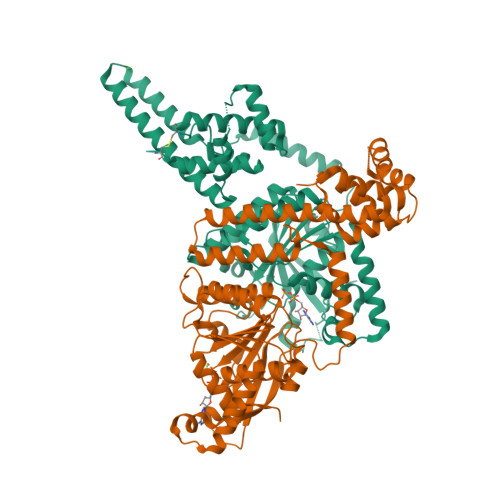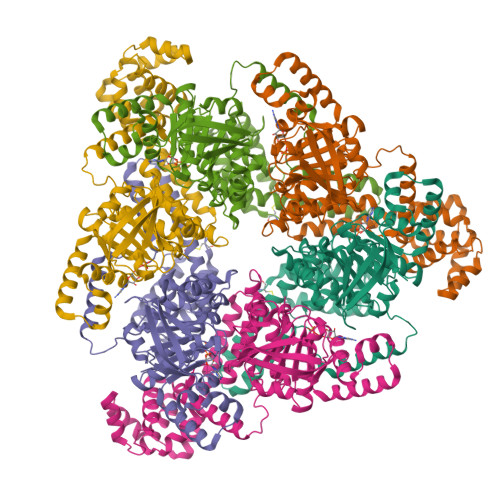Nucleotide and partner-protein control of bacterial replicative helicase structure and function.
Strycharska, M.S., Arias-Palomo, E., Lyubimov, A.Y., Erzberger, J.P., O'Shea, V.L., Bustamante, C.J., Berger, J.M.(2013) Mol Cell 52: 844-854
- PubMed: 24373746
- DOI: https://doi.org/10.1016/j.molcel.2013.11.016
- Primary Citation of Related Structures:
4NMN - PubMed Abstract:
Cellular replication forks are powered by ring-shaped, hexameric helicases that encircle and unwind DNA. To better understand the molecular mechanisms and control of these enzymes, we used multiple methods to investigate the bacterial replicative helicase, DnaB. A 3.3 Å crystal structure of Aquifex aeolicus DnaB, complexed with nucleotide, reveals a newly discovered conformational state for this motor protein. Electron microscopy and small angle X-ray scattering studies confirm the state seen crystallographically, showing that the DnaB ATPase domains and an associated N-terminal collar transition between two physical states in a nucleotide-dependent manner. Mutant helicases locked in either collar state are active but display different capacities to support critical activities such as duplex translocation and primase-dependent RNA synthesis. Our findings establish the DnaB collar as an autoregulatory hub that controls the ability of the helicase to transition between different functional states in response to both nucleotide and replication initiation/elongation factors.
Organizational Affiliation:
Biophysics Program, University of California, Berkeley, Berkeley, CA 94720-3220, USA.





















